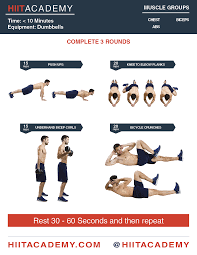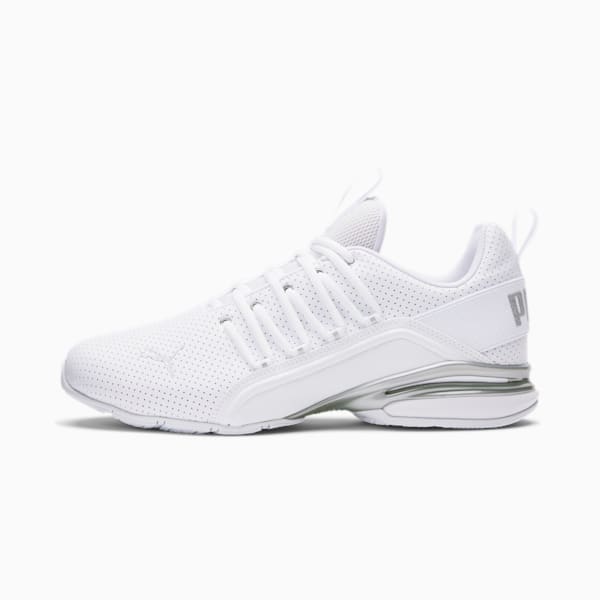
Many programs are available to help you complete a prenatal fitness program. Moms Gone Strong or Oh Baby! are two examples of such programs. Fitness, as well as the Prenatal + Postnatal Corrective Exercise Specialist Course of NASM. But which one is best for you? Let's explore some of the most popular choices and their benefits.
PPCES
Being certified as a prenatal correction exercise specialist will help you advance in your fitness career. This certification focuses primarily on the safety and well-being of pregnant moms and their babies. The course was designed by medical professionals to ensure participants' safety during the most critical times of pregnancy. Moreover, this course builds upon basic knowledge of pregnancy and the body's changes during labor and delivery. Fitness professionals can also learn how to provide safe and effective exercise to the fetus. This decreases the risk of complications, and allows for a more pleasant labor experience.
The certification is valid throughout your life. The course is also regularly updated. You need to complete all the modules, and pass any quizzes required to keep your certificate valid. You should complete all modules and schedule a final exam by virtual call after you have completed them.
Mothers Go Strong
Prenatal Coaching Certification comprises five comprehensive unit exams, each containing between 30 and 40 questions. You can work at your own pace to complete the exams. You will also receive a workbook with case studies and a study guide to help you understand the material and prepare for the exam. The two programs have some similarities, but there are also some key differences.

Your training will cover the most common prenatal concerns and proper exercise intensity. You'll also learn about pregnancy-specific dangers. You'll also learn about misconceptions about exercise during pregnancy. You'll be able to understand the risks and benefits associated with exercise during pregnancy. Also, you will learn how to modify exercises for any level of fitness. You'll also learn about exercise modifications for common conditions that occur during pregnancy, such as a miscarriage or infertility.
ACE's Oh Baby Fitness
Oh Baby! The Oh Baby! fitness for prenatal certification program is designed in order to assist new mothers in achieving a healthy lifestyle. This program also educates instructors about the benefits and importance of communicating with clients. The program has been credited as a leader in perinatal fitness since its inception.
Oh Baby! Fitness program offers training in both prenatal and postnatal fitness. You can access it online for $185 to complete the training. Individual teaching videos start at $130. You will also receive continuing education credits (CECs) from ACE, AFAA and NASM.
NASM's Prenatal & Postnatal Corrective Exercise Specialist Course
The Fit For Birth Pre + Postnatal Corrective Exercise Specialist Course is a comprehensive education that covers the essentials of pregnancy and exercise safety. The course incorporates traditional holistic methods as well modern techniques that enhance women's health in pregnancy and postpartum. It helps to prepare the body for labor and delivery. This reduces the likelihood of complications and ensures a happy delivery.
In addition to the course curriculum, the Fit For Birth team will analyze each client's assessment results and develop a personalized prenatal exercise program. It will consider their individual preferences and needs as well as time constraints and stress levels. The Fit For Birth staff will work one-on-1 sessions with each client based on their chosen plan and their motivations. The course is offered online through a virtual learning platform and includes downloadable PDF manuals.

Erica Ziel's Knocked-Up Fitness
A personal trainer and fitness entrepreneur, Erica Ziel has created the Knocked-Up Fitness prenatal certification program to teach women how to strengthen the deep core muscles of their bodies during pregnancy. By strengthening these core muscles, women can expect a more comfortable pregnancy and a safer delivery. This program quickly became a favorite online destination among pregnant women.
The training program includes ten mix-and match workouts to strengthen core muscle and pelvic floor strength. While they are working out clients may feel pain in their lower back, hips, or back. It also addresses issues with the round ligaments which can cause pain, pulling, or burning.
FAQ
What should I do if I'm working out?
Drinking alcohol is high in calories so it's best to not consume too much while working out. The moderate intake of alcohol (one a day) may improve endurance for workouts. It may also reduce fatigue from exercise and muscle aches.
Is it possible that you can be too thin?
Yes! Both eating disorders and underweight are unhealthy. It isn't normal to be smaller than your recommended height. You may also feel tired, weak, dizzy, and experience other symptoms that could indicate being underweight.
Why is fitness so important?
Fitness is crucial for our health. For our health to be healthy, we need to exercise often. Exercise also helps us sleep better at night, reduces stress, improves self-esteem, and increases energy levels throughout the day.
Are there any exercise I shouldn’t do?
You should always consult with your doctor before starting any new workout routine. You may have injuries or other medical conditions that prohibit you from exercising in certain ways. Certain activities require special equipment and training. Swimming, for example, requires swimming suits and access to the pool.
How Can I Get Started With Fitness?
Start small. You can start by taking 10 minutes each week to walk around the block. This will show you how to move and give your muscles the time to adjust. Once you are proficient in this type of exercise, add more steps and routines to your day.
What are Resistance Training Exercises?
Resistance training involves using weights or other objects to perform specific movements. Lifting weights helps strengthen your arms, shoulders, chest and back, as well as your legs, hips, and core. Resistance training builds muscle mass, increases bone density, and promotes greater overall strength.
Statistics
- An estimated 110,000 deaths per year could be prevented (cdc.gov)
- According to the Centers for Disease Control and Prevention, chronic diseases cause 7 out of 10 deaths in the U.S., and treating chronic diseases accounts for 86% of U.S. healthcare costs. (mana.md)
- In high-income countries, 26% of men and 35% of women were insufficiently physically active, as compared to 12% of men and 24% of women in low-income countries. (who.int)
- Adolescent girls were less active than adolescent boys, with 85% vs. 78% not meeting WHO recommendations of at least 60 minutes of moderate to vigorous intensity physical activity per day. (who.int)
External Links
How To
How to Lose Belly Fats More Fast
When we are trying to lose weight, belly fat is often seen as a problem. It's actually a good thing, in fact. It is the fat in your stomach that protects your organs. Let's learn how to quickly burn belly fat.
The main factors that contribute to our body fat accumulation are stress and inactivity. Cortisol hormone is stimulated by stress, which causes us to feel constantly hungry. Cortisol is responsible for an increase in insulin levels. The insulin then stores extra calories as fat. The release of adrenaline from our bodies causes increased appetite. These extra calories can be broken down by exercising.
There are many different ways to reduce bellyfat. Any one of these can be tried, depending on how much you have to spend. These are some great tips to help you lose belly fat fast.
-
Eat less food. Instead of eating three large meals a day, eat smaller meals. You'll eat fewer calories this way.
-
Drink plenty of fluids. Water helps flush out toxins from the body and keeps you hydrated. Water before each meal can help you feel fuller longer and reduce your appetite so that you don't overeat.
-
Avoid unhealthy snacks. If you're looking for quick fixes, snack foods like chips, cookies, candies, etc. These tempting snacks might look appealing. Avoid these unhealthy treats. They are full of empty calories, too much sugar, and can be very fattening. Choose healthy alternatives like fruits and vegetables, nuts, seeds, whole grains, and seeds.
-
At least three times per semaine, do strength training. Strength training builds muscle mass that burns more calories, even when it is done while you rest. Strengthening your bones, muscles as well ligaments, joints, tendons, heart and lungs.
-
Regularly walk or stretch. Stretching is a great way to increase flexibility and mobility. This helps reduce back pain. Walking is great for burning calories, especially brisk walking for 30 minutes.
-
Reduce alcohol intake. Avoid alcohol.
-
Reduce your weight gradually. First, determine your current weight. Next, calculate your ideal weight by adding between 5% and 10% to your total body weight. Once you have calculated your target weight, start reducing calorie consumption by 500-1000 calories daily until you reach your goal.
-
Avoid processed foods. These foods contain high levels of sugar, salt, and preservatives. Although they are convenient, processed foods don't have enough nutrients to sustain your health.
-
Don't skip breakfast! Eating breakfast improves concentration, memory, and energy level. Breakfast should contain protein (like eggs), fibre (like oats), as well as complex carbohydrates (like oatmeal).
-
Have regular bowel movements. Gas and bloating can result from irregular bowel movements. To prevent this, drink plenty of water and increase fiber intake.